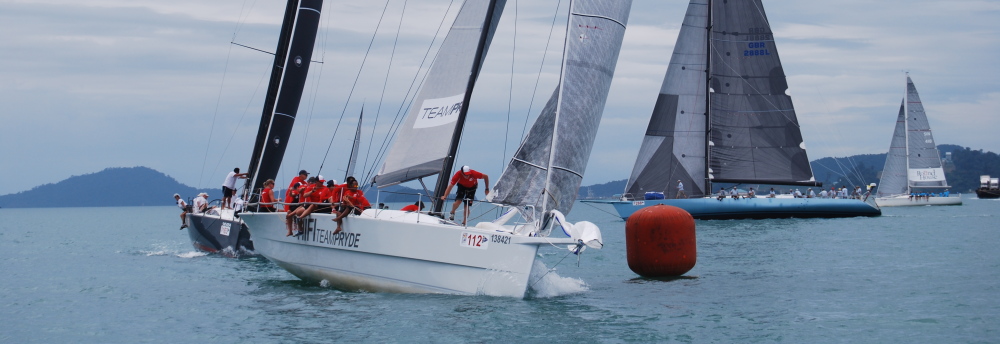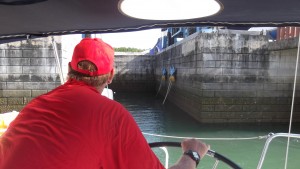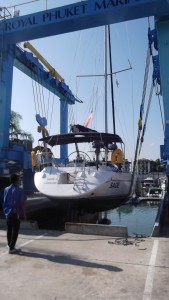Lifting a yacht weighing seven and a half tonnes needs a special crane. The one at the Royal Phuket Marina can accommodate a vessel of up to sixty. It has a wheeled rectangular frame and is driven by a powerful diesel engine that can raise the vessel from a dock on slings. Once the keel is clear of the ground, the whole assembly can be driven to a suitable place on the hard standing, where the vessel is chocked up and released from the crane.
Here is the skipper reversing into the crane dock.
When you are reversing it makes sense to steer from in front of the wheel, for then you can turn the wheel in the direction you want to go, whereas if you stay in the default position, behind the wheel, you would have to reverse the movements and look over your shoulder. These little wrinkles which you might never think out on your own, are now almost second nature to me.
The tough fabric slings on which the boat is lifted are lying in the dock, and when you go in you can adjust the position of the boat with mooring lines to ensure the best possible distribution of slings to support the hull but to avoid contact with the projections – keel, propeller, and rudder.
The big diesels lift the boat on the slings until the keel clears the edge of the hard standing. In the following snapshot we are approaching this stage.
Finally, the offending part is available for inspection. Here are the propeller blades.
In the snapshot above the bright bronze edge of one of the blades is clearly shown. This was caused by the polishing effect of the rock against which it was ground. Clearly the profile of this blade is different from the others as some of the obdurate manganese bronze of which it is made has been worn away. But this is not enough, I think, to account for the vibration. A careful inspection suggested that the pitch of one blade was different from the other two, and it is this that is more likely to have caused the problem.
Given the right equipment, truing up the propeller, which I understand is done on a lathe, is not a particularly complicated matter. However, like everything else to do with marine matters, a bit of a meal is made of it by those who possess the know-how, and they charge accordingly. In reality the process is not so very different from balancing a motor car wheel, but oh the sucking of teeth, the reliance on unique knowledge that accompanies the process of truing up the propeller – it scarcely merits belief!



